Hindley Street upgrade to prioritise pedestrians, outdoor dining
Wider footpaths, fewer car parks, tree planting, more garden beds and narrower roads will form part of a major council upgrade of the Hindley Street precinct, aimed at creating more outdoor dining space and better safety for pedestrians.

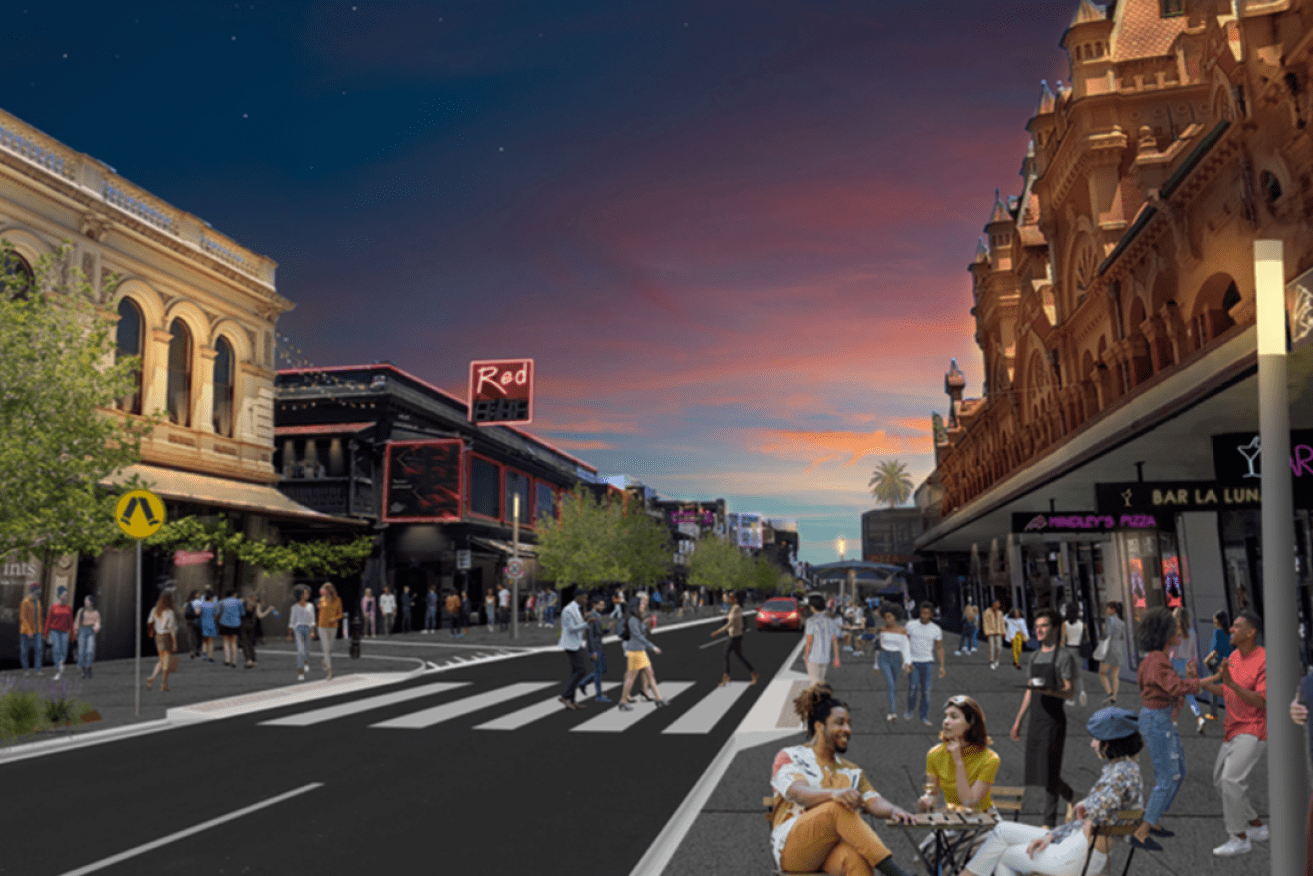
Draft concept designs for council's upgrade of Hindley Street. Image: Adelaide City Council
Adelaide City Council went out to tender this week for a design consultant to provide a “comprehensive detailed design” of council’s Hindley Street Main Street Project, which currently has an allocation of $15 million in council’s long-term financial plan, potentially rising to an estimated $24.7 million after detailed design.
The upgrade will cover the length of Hindley Street between King William and Morphett streets. The western part of the street near UniSA’s City West campus underwent upgrades from 2014 to 2017.
Concept plans published by the council in April proposed reducing the number of on-street car parks on Hindley Street from 66 to 46 and the number of motorcycle parks from 11 to 8.
Further, the dedicated left turn lane onto King William Street from Hindley Street, as well as the left turn lane onto Morphett Street, would be replaced with widened footpaths.
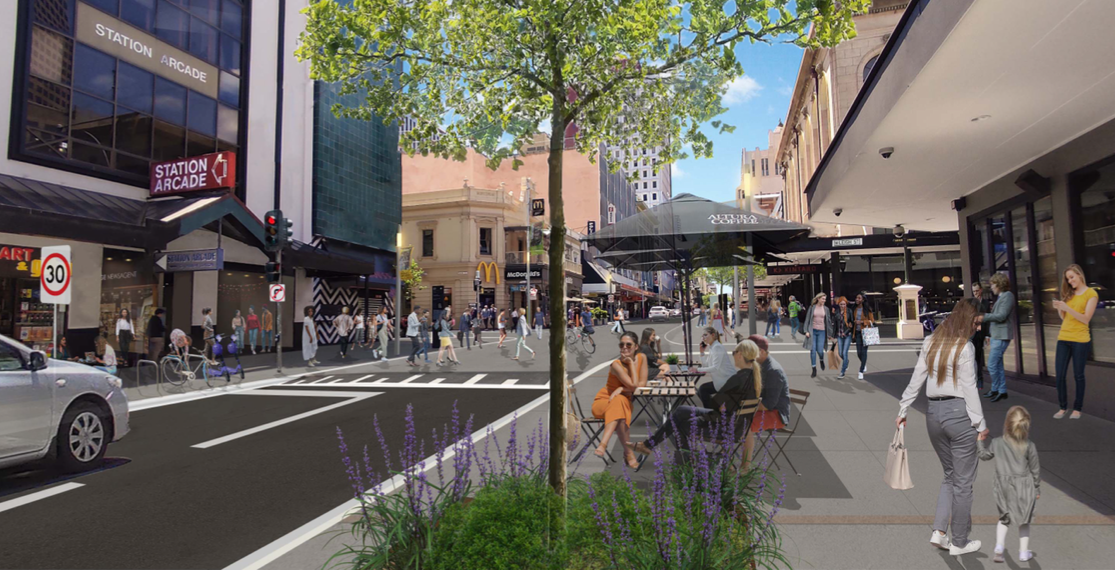
A concept design of the Hindley Street upgrade looking east towards Bank Street. Image: Adelaide City Council
The project, which is scheduled for construction from December 2024 to December 2026, would mark a major change to the composition of Hindley Street’s public realm.
Road area and car parks currently make up 54 per cent of the Hindley Street public realm compared to 46 per cent for footpaths and verges.
The plan proposes whittling down road space and car parks to 35 per cent and increasing footpaths, “activity zones” and greening to 58 per cent.
Seven per cent has also been earmarked for “flexi-zones”, described as areas that can be used for both parking and loading or outdoor dining and retail displays.
“The design has been developed to balance the needs of all users on the street,” says the council plan, which is subject to change.
“Pedestrian safety is improved by providing more footpath space, safe crossings at regular intervals along the street, and ensuring low vehicle speeds are maintained.
“Flexi-zones also provide the opportunity to temporarily widen the footpath to its full extent and remove parking in peak periods and events.”
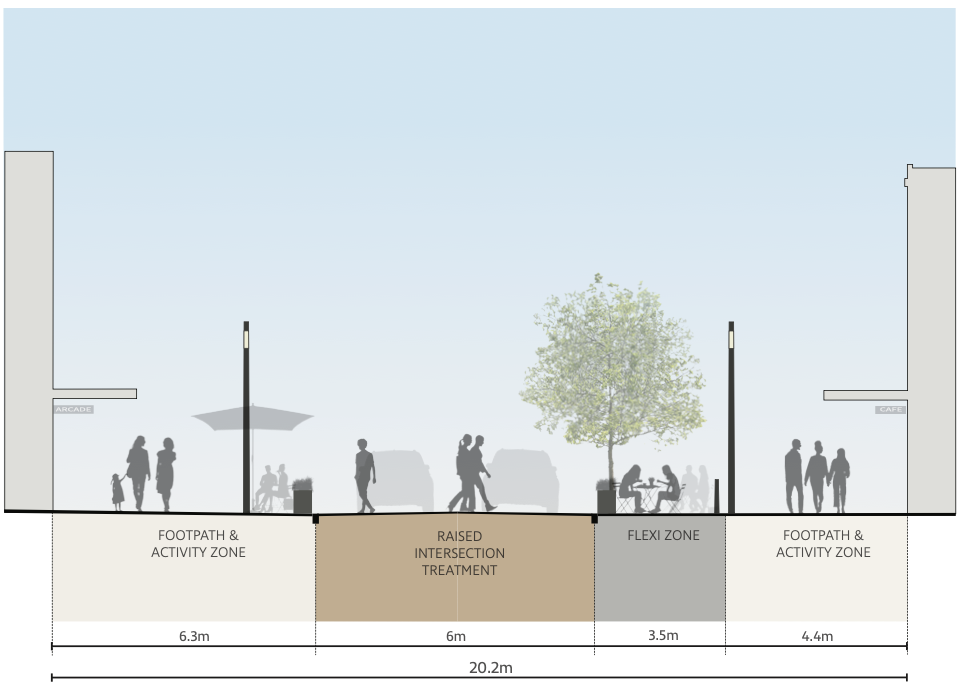
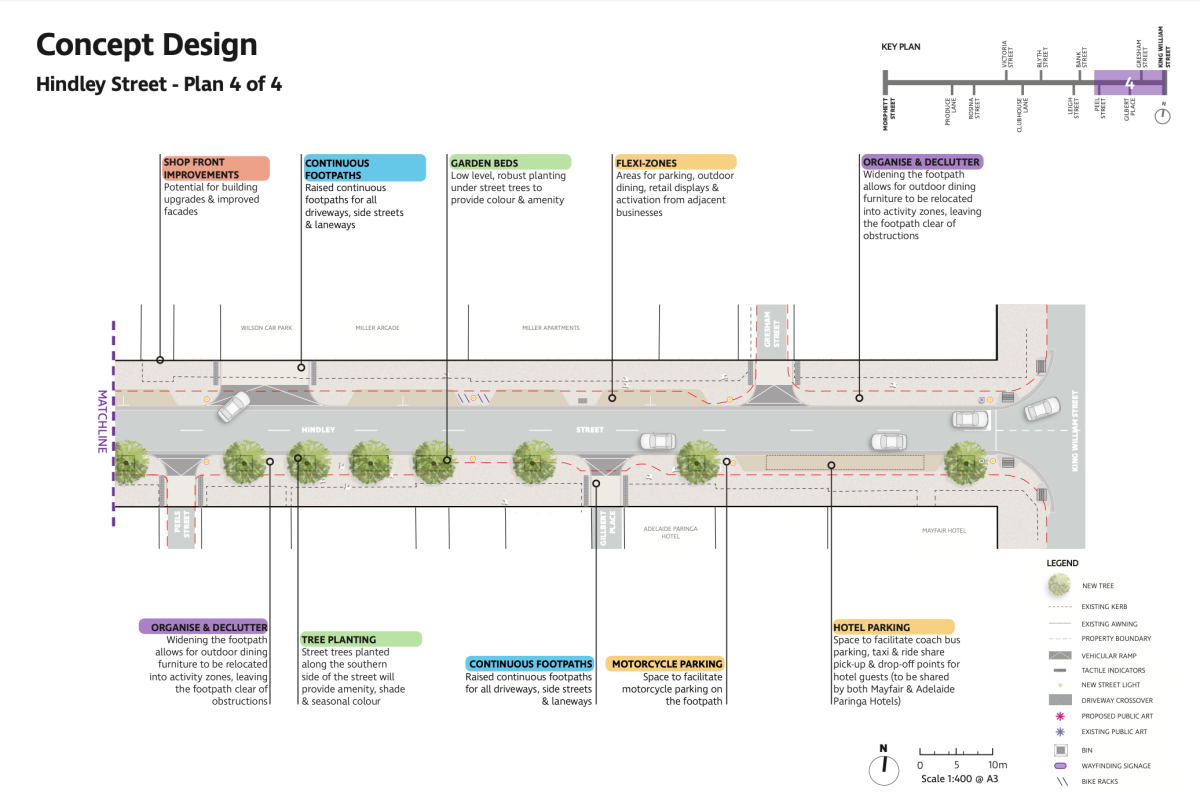
Concept designs of the plan between Peel Street and King William Street. Image: Adelaide City Council
The council has also flagged in its design principles for the upgrade a desire to “rationalise business signage and public street furniture” and “work with businesses to remove fixed outdoor dining and replace with removeable furniture”.
Hindley Street’s footpath/activity zone space is proposed to increase from 4553 square metres to 5534 square metres. Thirty-three trees and 226 square metres of garden beds will be planted.
New kerbs for the length of Hindley Street between King William and Morphett streets have also been flagged, including “rollover” kerbs in the flexi-zones.
Hindley Street is one of five main street upgrades in the council’s long-term financial plan.
Gouger Street ($14.5 million), O’Connell Street ($15 million), Melbourne Street ($6.5 million) and Hutt Street ($12.5 million) are the next in line for major upgrades.
Council administration told councillors earlier this year there was a “pressing need” to upgrade Hindley Street ahead of the other main streets because 80 per cent of council’s asset stock along the strip will be up for renewal by 2030.
Hindley Street’s paving has 30 years of estimated “useful life” left, according to the upgrade plan, which proposes new surface treatment for all road carriageways and footpaths along Hindley Street (between Morphett and King William streets).
Despite its status as the city’s premier nightlife strip, Hindley Street continues to have one of the highest vacancy rates in the city for ground-floor premises.
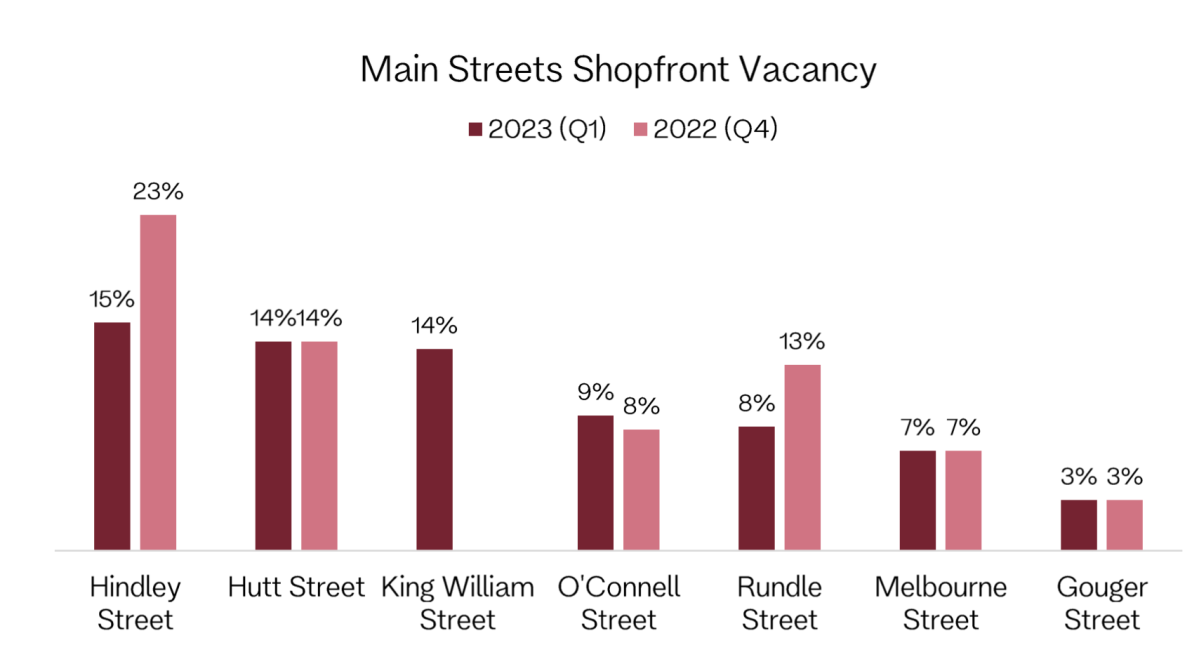
Vacancy rates along the city’s main streets in Q1 2023. Graph: Adelaide Economic Development Agency
A 15 per cent vacancy rate was recorded on Hindley Street in the first quarter of 2023, according to Adelaide Economic Development Agency (AEDA) data, which counted 23 vacant properties out of 150 along the street.
The result was an improvement from a 23 per cent vacancy rate recorded for the fourth quarter of 2022.
Pedestrian visitation to Hindley Street declined from around 10.8 million people in 2021 to 8.6 million in 2022, according to AEDA data.




